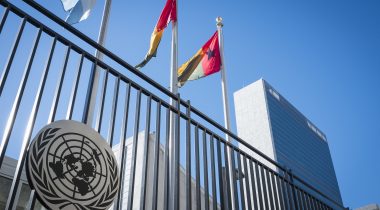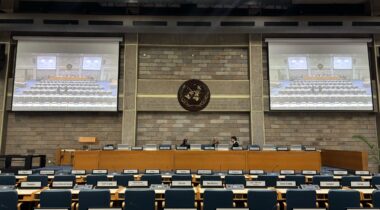
Andres Knobel ■ SWIFT data can be a global vantage point for tackling global money laundering

The Tax Justice Network has published today a proposal on how to use SWIFT data on bank transfers to detect money laundering schemes. Download the report here.
While many people are rightfully concerned about the serious risks for money laundering raised by new cryptocurrencies, banks and financial institutions that have been around for decades and centuries – and have been subject to several anti-money laundering provisions and know-you-customer procedures – are still abysmally failing to detect money laundering schemes.
In 2011, the UN reported that “the ‘interception rate’ for anti-money-laundering efforts at the global level remains low. Globally, it appears that much less than 1 per cent (probably around 0.2 per cent) of the proceeds of crime laundered via the financial system are seized and frozen.” In 2016, Europol reported that “the amount of money currently being recovered in the EU is only a small proportion of estimated criminal proceeds: 98.9% of estimated criminal profits are not confiscated and remain at the disposal of criminals.”
In 2014, OCCRP exposed the Russian Laundromat scandal that involved a USD$20 billion money laundering scheme and how, despite warnings, banks failed for years to shut it down. Billions were moved from Russia into 112 bank accounts in eastern Europe and then into banks around the world. In 2018, the Danske Bank scandal broke out, revealing that USD$200 billion of suspicious transactions flowed through Danske’s Estonian branch.
What can be done to stop money laundering?
Public beneficial ownership registries which verify any registered data are essential. A global access to automatic exchange of banking information would also certainly help in the fight against illicit financial flows – especially if the USA joined the OECD’s Common Reporting Standard for automatic exchange of information, and if the standard’s loopholes were closed – including those that prevent banking information from being used to tackle money laundering and corruption.
In the meantime, however, there’s a low-hanging fruit to be reaped: the SWIFT messaging system.
You may have heard of SWIFT if you ever made an international bank transfer. SWIFT involves a standardised messaging system used by thousands of financial institutions all over the world to communicate to each other details about a bank transfer, such as the identity of the originator and the recipient of the funds.
The SWIFT consortium, in addition to providing the messaging standard, already offers anti-money laundering and other services to banks to allow them to comply with financial regulations. However, even this extra available information may not be enough for a specific bank to discover a sophisticated international money laundering scheme involving many banks in different countries. To detect an international money laundering scheme, an overview of all global fund transfers is necessary. SWIFT may be in the best position to provide this big picture given that thousands of financial institutions communicate every day through SWIFT messages.
A legal framework will be needed to allow SWIFT to run analytics on the details of the millions of bank transfers to detect money laundering schemes. These advanced analytics could be based on criteria established by a group of anti-money laundering experts. Then SWIFT could share any red-flags with the authorities of the countries involved in any case of suspicion of money laundering. Information could first be shared on an anonymised basis, only providing the full details if a country meets all confidentiality standards. SWIFT has been sharing this type of information for years with the US for purposes of the fight against terrorism. In this case, information would be shared to tackle money laundering – but with all relevant countries. After all, about 100 jurisdictions are already automatically exchanging banking information pursuant to the OECD’s Common Reporting Standard. If these 100 countries are deemed compliant with confidentiality provisions to obtain information about the account holders and beneficial owners of bank accounts and their account balances, they would also likely meet confidentiality requirements to get access to data on bank transfers.
Lastly, we need transparency in the form of statistics. While SWIFT already publishes some statistical data on the number of SWIFT messages sent, their distribution by market and on their distribution by region, it should also publish anonymised and aggregated data on all international transfers at a country level, so that civil society and investigative journalists have access to basic data and can hold authorities to account. Statistics could look like this: “In 2020, Bank 1 in Germany (or all banks in Germany) transferred $100 billion to banks in France, $50 million to banks in Spain and received $100 million from banks in the US”. This would allow civil society organisations, researchers and journalists (as well as countries unable to receive SWIFT data for confidentiality shortcomings) to perform basic analyses of cross-border transactions. Additionally, reported statistics should allow observers to sort through financial transactions depending on the type of account holder (eg individual, company or trust) in order to detect patterns based on the type of legal vehicle involved in the financial transaction.
Related articles

UN tax convention hub

Two negotiations, One crisis: COP30 and the UN tax convention must finally speak to each other

‘Illicit financial flows as a definition is the elephant in the room’ — India at the UN tax negotiations

Taxation as Climate Reparations: Who Should Pay for the Crisis?

Tackling Profit Shifting in the Oil and Gas Sector for a Just Transition
The State of Tax Justice 2025

Follow the money: Rethinking geographical risk assessment in money laundering

Democracy, Natural Resources, and the use of Tax Havens by Firms in Emerging Markets

Why Climate Justice Needs Tax Sovereignty


